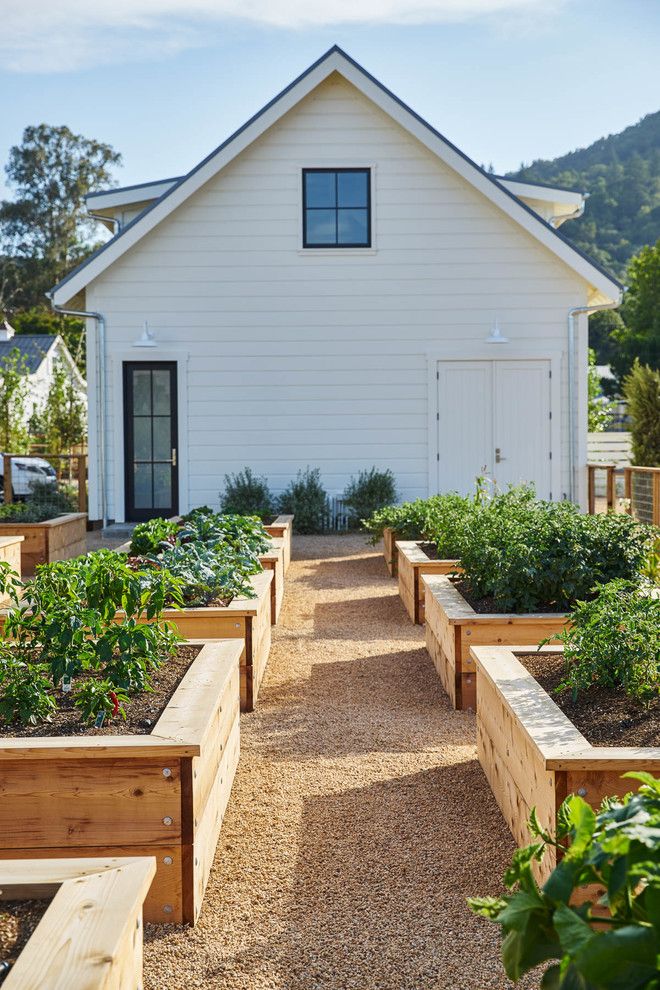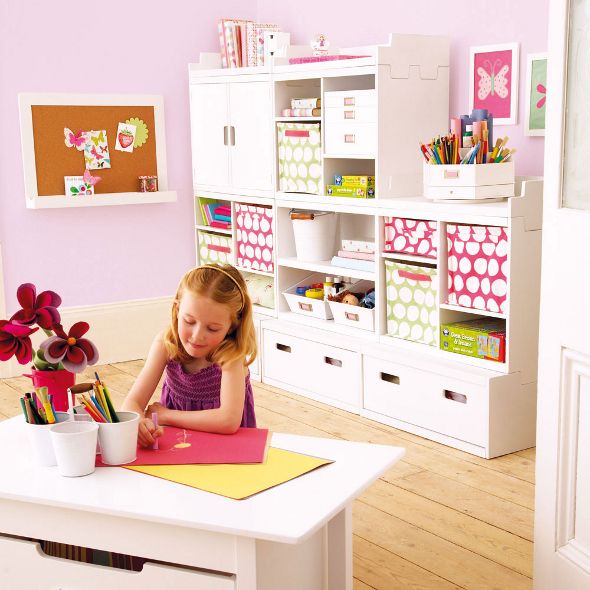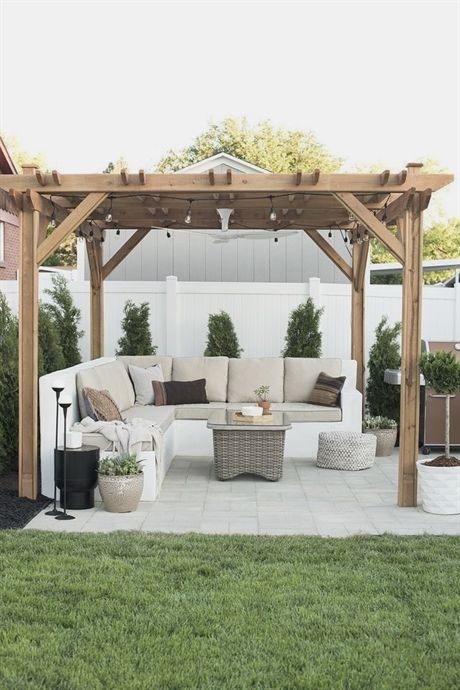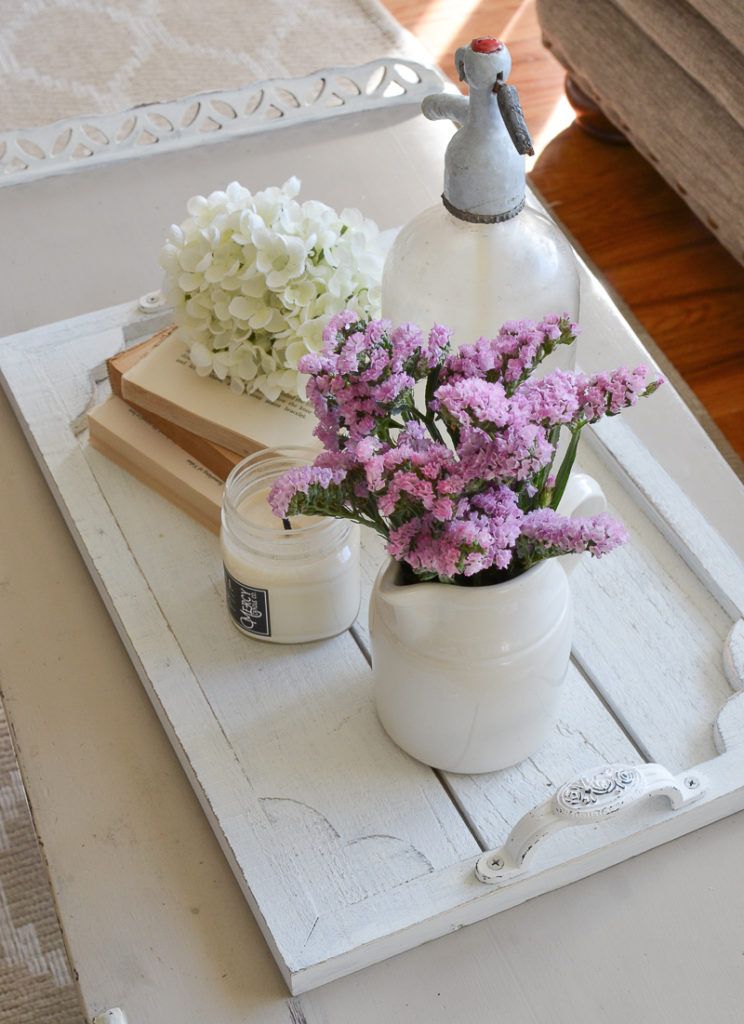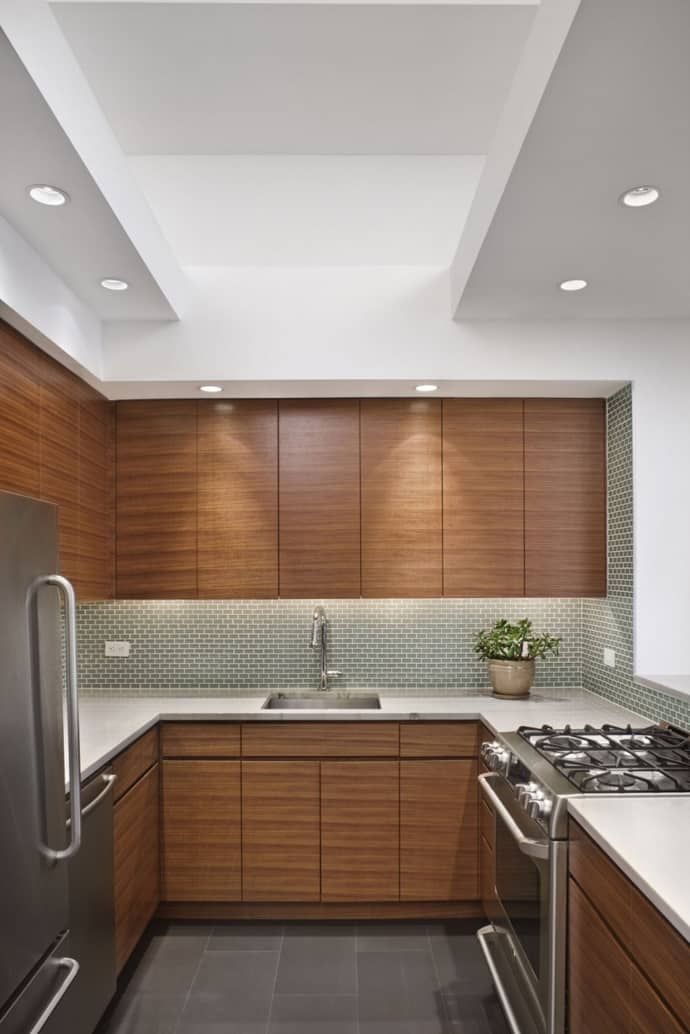What to plant in raised bed gardens
What To Plant In A Raised Garden Bed
Raised garden beds is an artistic way of cultivating plants in structures above the ground’s surface. The benefits of raised bed gardening are innumerable. Soil that is raised off the ground can be controlled for quality, creating a warm, nutrient-rich, well-draining growing environment for optimal root development and plant growth.
Raised bed structures allow for better soil, can maximize your growing space, lessen the need for bending, weeding, and can even ward off pests. Raised beds can be designed in so many ways and be constructed from wood, metal, stone, and brick; but what to plant in a raised garden bed?
The exciting answer is that you can grow just about anything in a raised garden bed as long as growing conditions such as sunlight, spacing, and temperature are on target for your plants.
Raised Garden Bed Fruits and Vegetables
Fruit and vegetable plants have high nutrient needs and thrive in raised garden beds. If you are looking for what to plant in a raised garden bed, check out this list of our favorite raised bed plants.
Tomatoes
Tomato plants thrive on stretching their roots deep into loose soil, eager to feed heavily. They love full sun conditions and make fantastic additions to raised garden beds. Since tomato plants can grow quite tall, plant them in the rear of a raised garden bed. Add tomato cages for support.
Legumes
Legumes fix nitrogen back into the soil as they grow, so they do double duty in the raised garden bed. They boost the nutrient content of the soil while producing plentiful harvests. They often can be found in freestanding and climbing varieties, both of which can be cultivated in raised beds.
- Chickpeas
- Bush and Pole Bean Varieties
- Peas
- Lentils
Kale and Swiss Chard
Kale and Swiss Chard are fantastic late-season crops in raised beds. They keep the soil from compaction and thrive in cooler temperatures, and can be covered with hoop houses or cold frames to extend their growing season, even supplying you with a fall and winter harvest.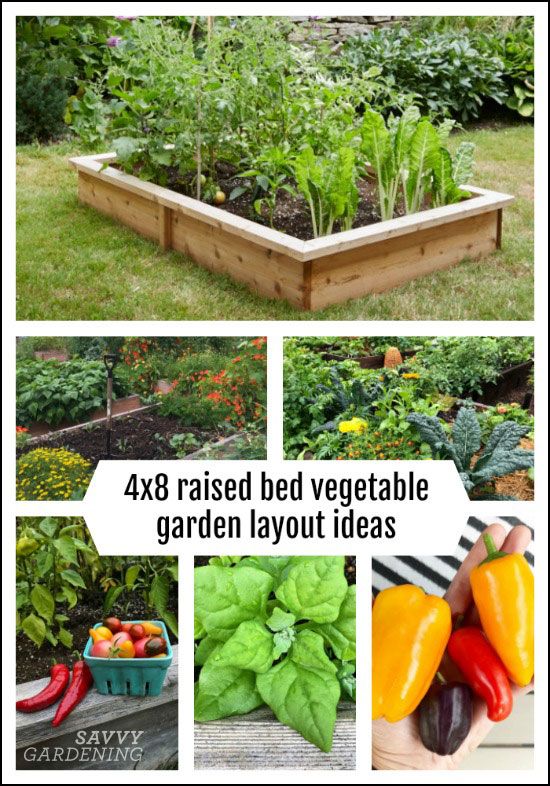
Lettuce, Spinach and Mixed Greens
Lettuce plants, spinach, and mixed salad greens thrive in the warm soil temperatures and well-draining soil of raised beds. As a gardener, you will love that you can extend your growing season by planting them earlier and successively all the way through winter with the proper protections in place.
Brassicas
Brassicas make great first-round early crops in a raised bed environment. They have a tendency to bolt in hot temperatures and love the regulated soil temperatures that raised beds provide. Soil is kept warmer, which can be season extending for both early and later season crops. They can also be covered easily in raised beds, making it easy to obtain a fall and winter harvest.
- Broccoli
- Cauliflower
- Arugula
- Cabbage
- Kale
- Brussel Sprouts
Peppers and Eggplant
When we think about what to plant in a raised garden bed, eggplant and fun peppers often come to mind for a good reason.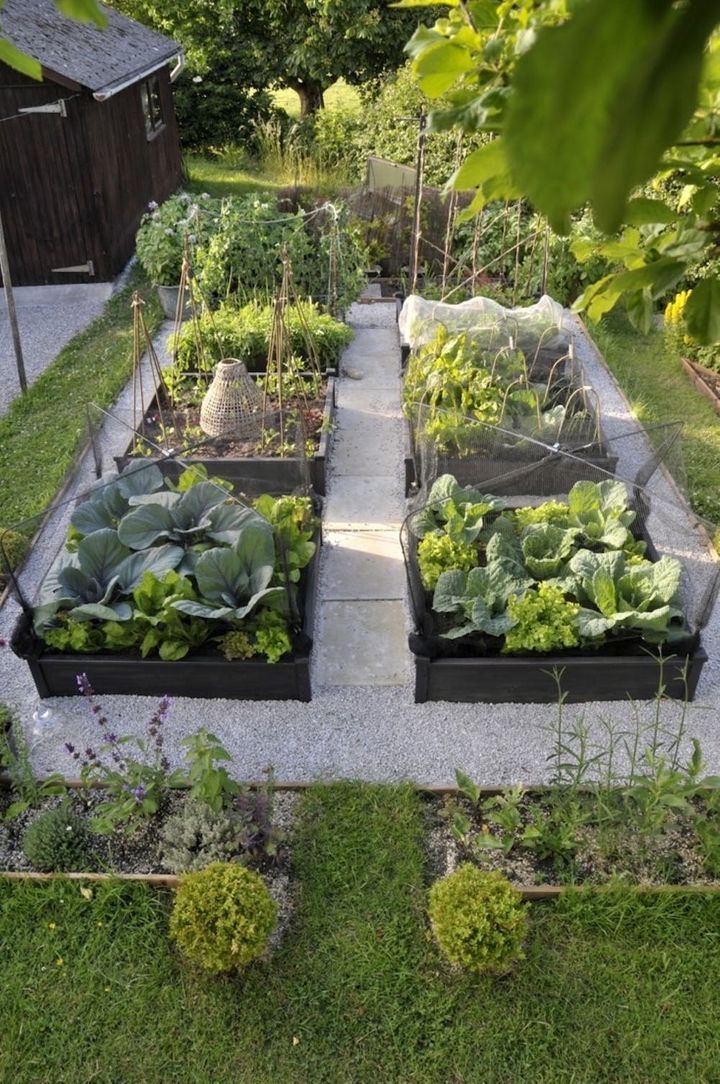 They thrive in the warm soils of raised beds and are heavy feeders of nutrients. Raised beds make it easier for gardeners to keep up with these bountiful producers’ nutrient and watering requirements.
They thrive in the warm soils of raised beds and are heavy feeders of nutrients. Raised beds make it easier for gardeners to keep up with these bountiful producers’ nutrient and watering requirements.
Carrots
Carrots are phenomenal candidates for raised bed growing. Raised beds provide loose well-draining soil where carrots can grow unimpeded by rocky ground. Because they produce fruit underneath the soil and their habit is relatively low, they can be tucked in easily under taller plantings’ protection.
Beets and Radishes
Beet plants and radishes are lovely root vegetables that thrive in the loose soil of raised beds, and they grow particularly well when not in competition with weeds or impeded by rocky soil. Due to their quick maturation times, they make ideal succession-planted crops.
Cucumbers
Cucumbers will flourish in raised beds. Allow them to cascade over the sides of raised beds or up trellises to maximize space for these prolific fruiting plants.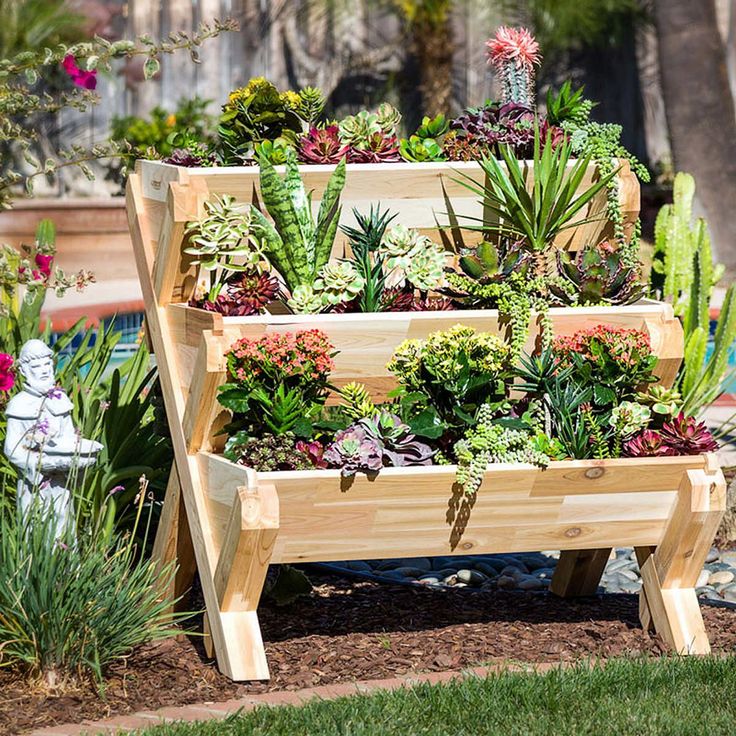
Celery
Celery is just begging to settle its roots in a raised bed. It can be a finicky plant that requires plenty of moisture, cool temperatures, nutrient-rich soil, and a long growing season. Raised beds can keep aphids and root nematodes at bay as well.
Potatoes
Potatoes thrive in a raised garden bed. Growing in soil that is well-draining prevents rot, and the loose soil allows tubers to form fully, unimpeded by dense soil and rocks.
Melons
Large fruiting plants like melons thrive in raised beds. Warm, pH-balanced soil that is rich in nutrients and provides adequate drainage is the ideal growing environment for juicy melons of all varieties. These vining plants can be allowed to spill over the sides of raised beds or be trained to climb trellises or other climbing structures to maximize space.
Strawberries
Strawberry plants produce particularly well where the soil is warm, and the sunlight is plentiful. Raised beds offer these optimal conditions, and they also help protect strawberry plants from menacing slugs that seek to feed on succulent fruits.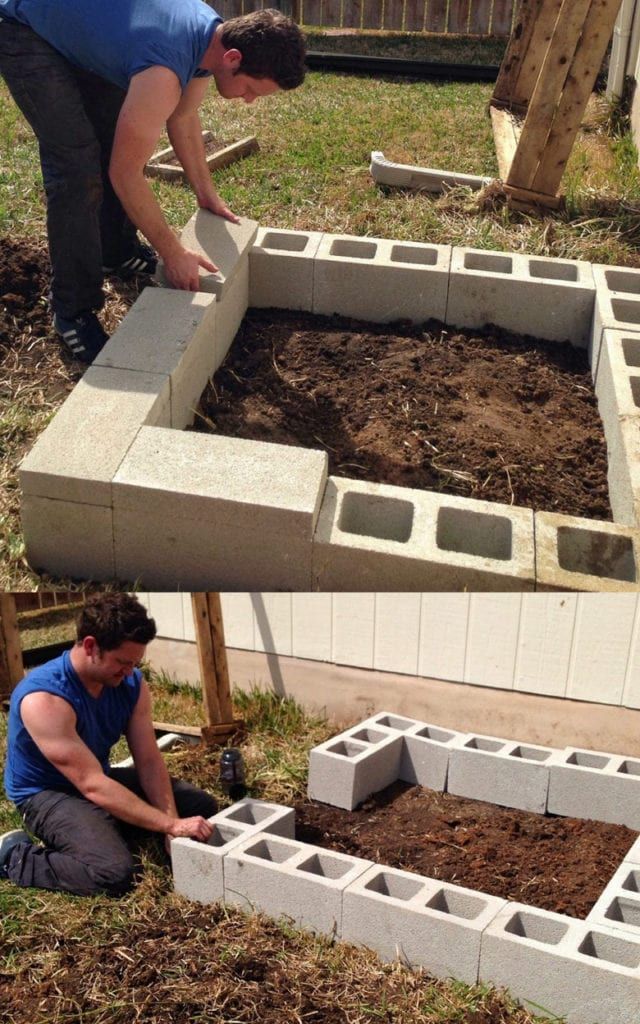
Squash and Zucchini
Large vegetables like squash and zucchini can most definitely be planted in raised beds. Bush varieties have an open habit and make excellent additions to raised beds. You can also allow quick-growing, vining plants to flow out over the edges of raised beds or add trellises for them to climb on.
Raised Bed Garden Flowers and Herbs
We focused a great deal on vegetables and fruits when highlighting what to plant in a raised garden bed. But herbs and flowers are also phenomenal growers in raised beds. Many of them make great companion plants, drawing beneficial pollinators to the garden bed, masking the scent of prized vegetables, and protecting them from garden pests. They can also be quite beautiful.
Kellogg Garden Organics
All Natural Raised Bed & Potting Mix
Learn More
Product Locator by Locally
Product not available in AZ, CA, HI, NV, UT. For a comparable product in these states click here.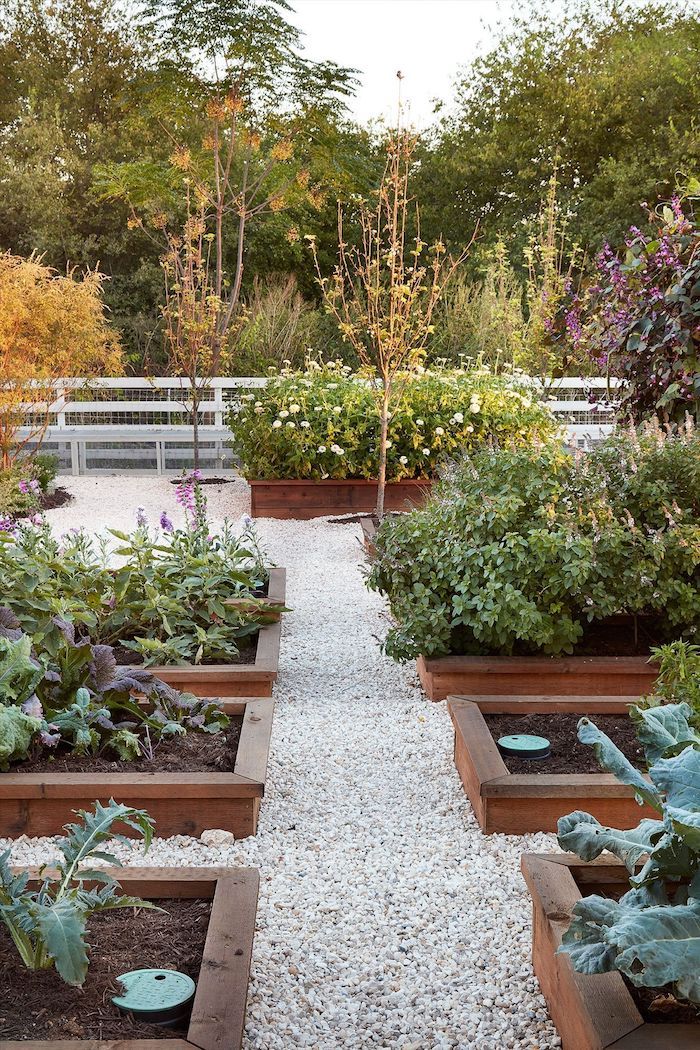
Raised Garden Bed Companion Planting
When deciding on what to plant in a raised garden bed pairing plants together in the same raised garden bed can be mutually beneficial, boost plant growth and production, draw beneficial pollinators, enhance flavor, and even ward off destructive pests. Some plants are tall and can provide much-needed shade and protection to plants that thrive in partial sun conditions. Other plants draw beneficial pollinators to the garden or even act as pest deterrents when planted in proximity to individual plants. Some plants should not be planted in the same garden bed. Here are some suggested pairings when thinking when planning what to plant in a raised garden bed.
- Basil repels mosquitos and flies and can improve the flavor of tomatoes.
- Thyme is a scented herb that repels certain varieties of parasitic worms that seek to destroy strawberry plants.
- Plant lavender near fruit to attract beneficial pollinators.
- Nasturtiums, marigolds, sunflowers, and zinnias can be helpful at repelling harmful insects
- Cosmos attract many helpful insects that feed on problem insects that eat vegetables.
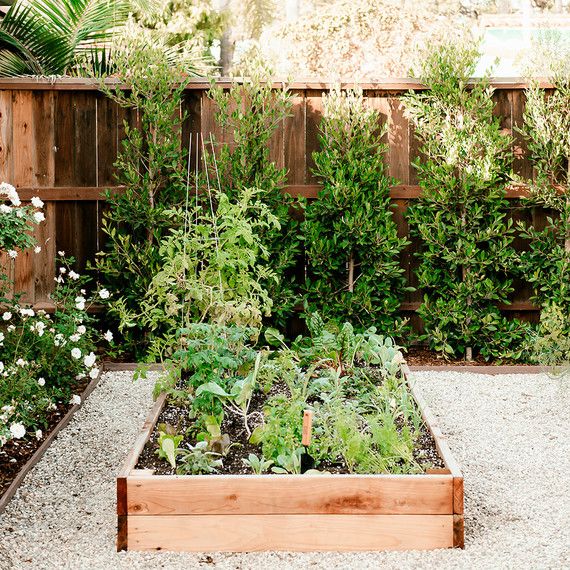
- Marigolds keep damaging insects at bay both above and below the ground.
- Mint deters flea beetles and cabbage moths.
- Sage is not a good match for cucumbers.
- Chives and carrots make friendly neighbors in the garden.
- Keep dill close to cabbage and far from carrots.
- Borage repels damaging insects, but it also attracts beneficial insects and pollinators.
- Caraway attracts insects that feed on pests that can cause significant damage to strawberries. Such insects included parasitic flies and wasps that will protect strawberries from fruit-seeking pests like aphids and mites.
Fun plant pairings
When trying to determine what to plant in a raised garden bed, have a little fun with your plant pairings. Encourage the farm-to-table concept and make harvest time even more exciting by planting edibles in groups according to what you like to eat.
Create a Pizza Garden
Make gardening a family affair and create a pizza garden in an area of your raised bed or dedicate a whole raised bed to the theme of pizza.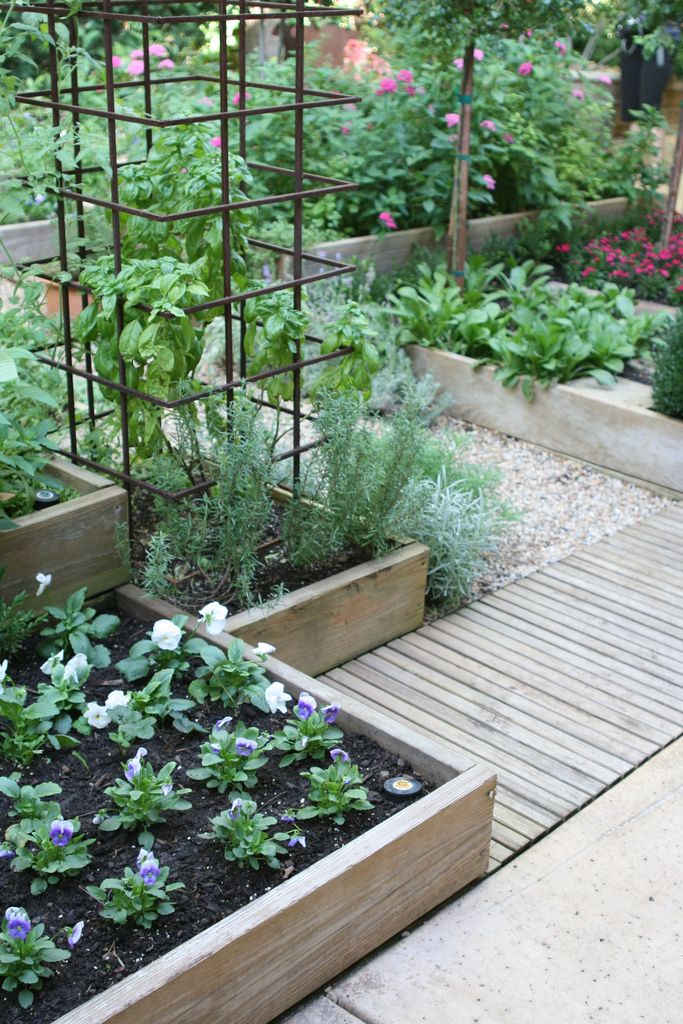 Not only will it be convenient to have all of your homegrown pizza ingredients in one place for harvesting, but have you heard that planting herbs such as basil, oregano, parsley, and thyme in the proximity of your tomato plants can actually boost the flavor of your tomatoes?
Not only will it be convenient to have all of your homegrown pizza ingredients in one place for harvesting, but have you heard that planting herbs such as basil, oregano, parsley, and thyme in the proximity of your tomato plants can actually boost the flavor of your tomatoes?
- Tomatoes
- Parsley
- Oregano
- Thyme
- Basil
- Other ideas: Peppers, onions, broccoli, eggplant
Plant a Salad Bowl
If salads are a staple in your diet, plant your own mix of greens and salad accouterments together in the same raised garden bed. Consider some of these tried and true salad bowl favorites when planting:
- Spinach
- Mixed lettuce varieties
- Garbanzo beans
- Peppers
- Cucumbers
- Radicchio
- Lemon or Lime Basil
- Cherry tomatoes
- Red onions
- Carrots
Overall
Raised garden beds give gardeners variety in garden style, make garden chores easier, and helps build garden spaces that can accommodate a plethora of crops in a more compact area. The possibilities of what to plant in a raised bed are endless. No matter what you plant in your garden, make sure that you give your plants their best chance at success by providing optimal nutrient-rich, well-draining soil, water, feed, and select a full sun site for your raised garden bed.
The possibilities of what to plant in a raised bed are endless. No matter what you plant in your garden, make sure that you give your plants their best chance at success by providing optimal nutrient-rich, well-draining soil, water, feed, and select a full sun site for your raised garden bed.
Share The Garden Love
The Best Vegetables to Grow in Raised Beds: 10 Easy-to-Grow Choices
Raised beds are a popular way to grow vegetables in home gardens and for good reason. They warm up earlier in spring extending the growing season, drain well, and allow you to control the soil. These advantages make it easier to grow crops like tomatoes, peppers, carrots, and melons which benefit from the warm loose soil. Read on to discover the best vegetables to grow in raised beds.
There are many advantages to gardening in raised beds: they warm up early in the spring, offer well-draining soil, and allow you to control the soil.Why garden in raised beds
As noted above, there are a lot of advantages to growing food in raised beds.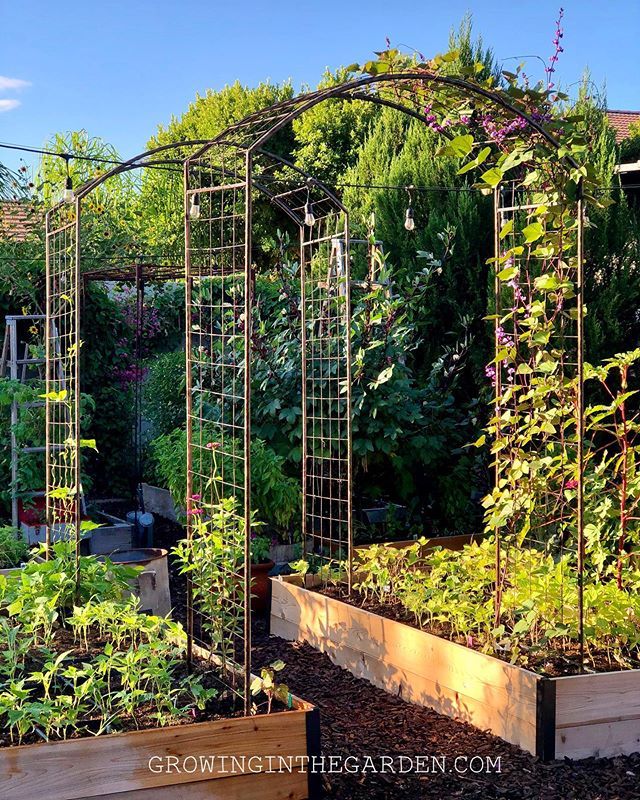 I’ve been a raised bed gardener for over fifteen years and the main reason is because they require far less work than my former in-ground garden. It didn’t take me long to realize that my raised beds also help me grow crops that used to struggle when I planted them in my native clay soil. Here are seven awesome reasons to garden in raised beds:
I’ve been a raised bed gardener for over fifteen years and the main reason is because they require far less work than my former in-ground garden. It didn’t take me long to realize that my raised beds also help me grow crops that used to struggle when I planted them in my native clay soil. Here are seven awesome reasons to garden in raised beds:
- The soil warms up early in spring.
- Raised beds drain-well.
- They’re ideal for sites where the existing soil is poor, rocky, or contaminated.
- Deep, loose soil makes it easier to grow root crops like carrots.
- You can plant intensively in raised beds, maximizing the harvest.
- Raised beds typically have fewer weeds.
- Elevated beds look tidy, which is an advantage if you’re growing food in a front yard.
To read more about the many benefits of gardening in raised beds be sure to check out this detailed article by Tara.
Cucumbers love the warm, well-draining soil of raised beds.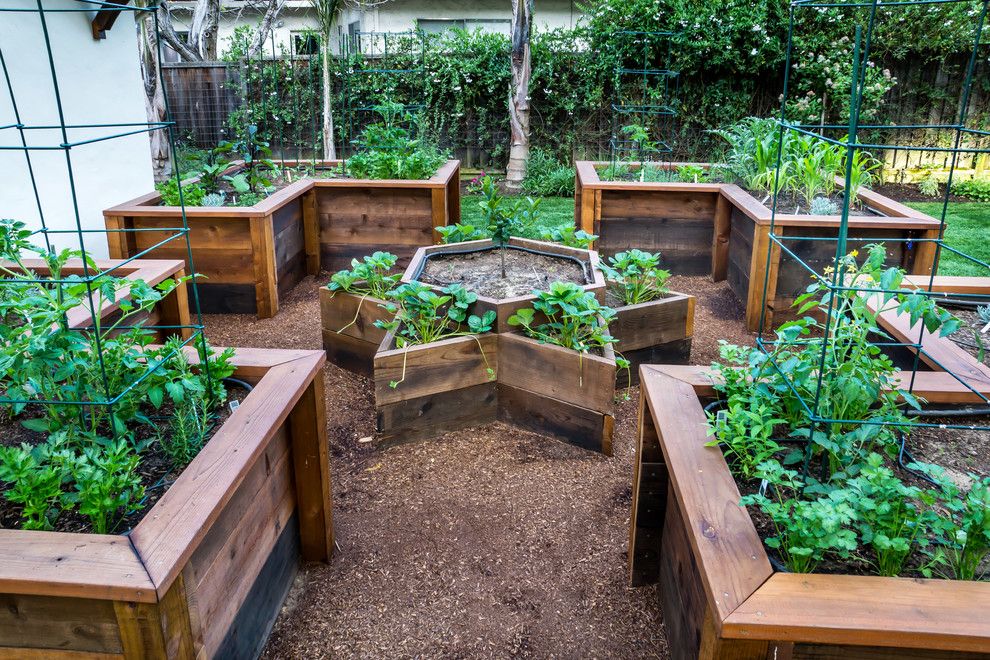 I like to grow them up strong trellises or cages to maximize my growing space.
I like to grow them up strong trellises or cages to maximize my growing space.Selecting the best vegetables to grow in raised beds
As I flip through a stack of seed catalogs in winter or wander down the aisles of my local garden centre in spring trying to decide what to grow I keep a few things in mind:
- Grow what you like to eat – When deciding what vegetables to grow, consider which ones you like to eat! It sounds simple but ideally you should grow your favorite crops, leaving space for one or two new-to-you vegetables or varieties each season.
- Length of your growing season – It’s essential that you select vegetables that have time to mature during the length of your growing season. This is where raised beds come in handy! I live in a northern climate with a fairly short growing season. This can make it difficult to mature long season, heat-loving vegetables like melons and hot peppers. Raised beds have the advantage of warming up earlier in spring extending my growing season and helping these warm season vegetables get off to a strong start.
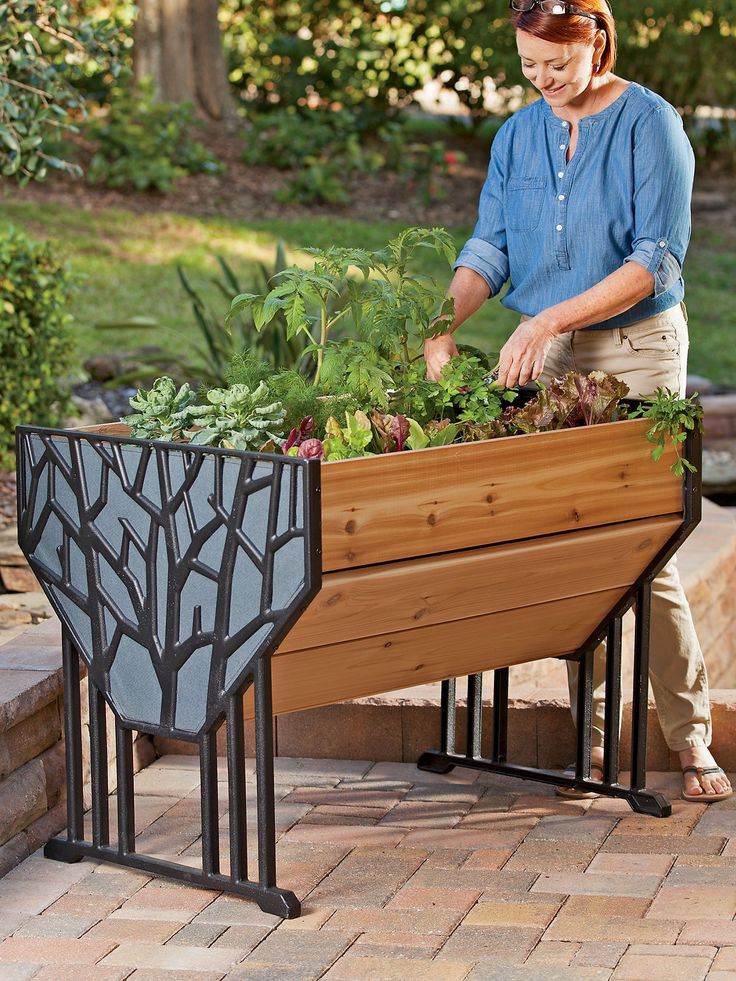 Not sure how to find out the length of your growing season? Check out this handy calculator from our friends at The National Gardening Association.
Not sure how to find out the length of your growing season? Check out this handy calculator from our friends at The National Gardening Association.
The 10 best vegetables to grow in raised beds
While it’s true that any vegetable can be grown in a raised bed, there are certain crops that are easier to grow or benefit from the advantages that raised beds offer. Here are the 10 best vegetables to grow in raised beds:
Bush beans
Bush beans are one of the best vegetables to grow in raised beds because they’re quick, easy, and compact. Most varieties begin to crop a mere 50 to 55 days from seeding. Bush beans are a warm season vegetable and can’t be planted until after the last spring frost.
If planted in cold, wet soil you may find the seeds rot instead of germinate. The early warm up and well-draining soil in raised beds helps bush beans get off to a healthy start. To ensure a long season of tender pods I sow more seeds every 3 weeks from late spring through mid-summer.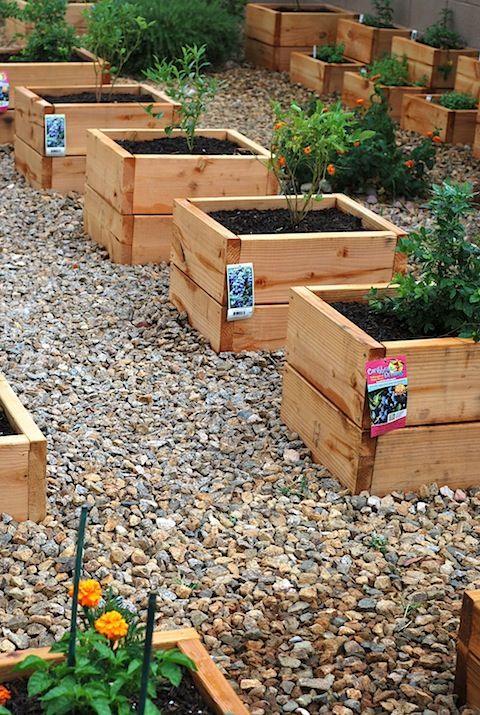
Pole beans are another option for home gardeners, but bush beans are easier to grow in raised beds as they don’t require support. Pole beans can grow six to nine feet tall and should be grown up bean towers, bamboo posts, or netting. One of my favorite ways to grow pole beans in my raised bed garden is to use sturdy four by eight foot wire trellises at the back of my beds or make pole bean tunnels between the raised beds. Check out this article for details on how I made my bean tunnels.
Bush beans are a top crop for raised beds. The compact plants are quick and easy to grow and yield a good crop of tender pods.Sweet and Hot Peppers
There are dozens of types of peppers to grow in a home garden with fruits in a diverse range of colors, sizes, and shapes. Sweet peppers have little to no heat while hot peppers can be mildly to extremely hot. Sweet and hot pepper plants thrive in warm, well-draining soil. I used to struggle to grow peppers in my zone 5 garden until I switched from in-ground plantings to raised beds.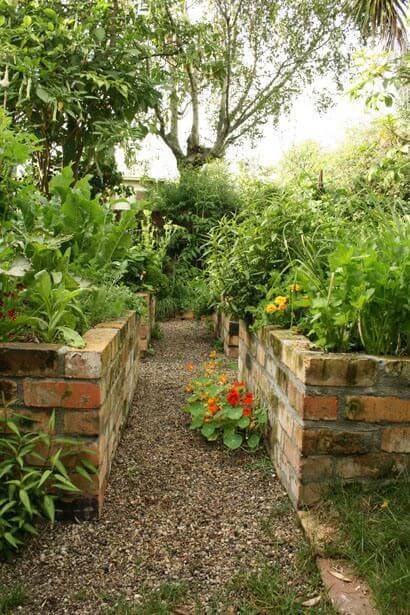 This was a game-changer! Why? The soil in my raised beds warms up far quicker in late spring than my in-ground garden beds. The plants adapted better after transplanting and responded with quick, vigorous growth. This is why peppers are among the best vegetables to grow in raised beds.
This was a game-changer! Why? The soil in my raised beds warms up far quicker in late spring than my in-ground garden beds. The plants adapted better after transplanting and responded with quick, vigorous growth. This is why peppers are among the best vegetables to grow in raised beds.
Another reason raised beds are tops when growing peppers is that they prefer light, well-draining soil. That doesn’t mean they want to be grown in dry soil, they don’t! Peppers need regular watering, but don’t want to be sitting in saturated soil. Growing them in raised beds and mulching with straw or shredded leaves encourages healthy growth and plenty of peppers.
Tomatoes
Tomato plants love warm soil and planting in raised beds, particularly in cooler regions can give you a head start on the growing season. In my former in-ground garden I couldn’t transplant tomatoes until mid-June as the soil was too wet and cold. With raised beds I now set out my tomatoes in late May.
The deep, loose soil in my raised beds also lets me plant tomato seedlings deeply.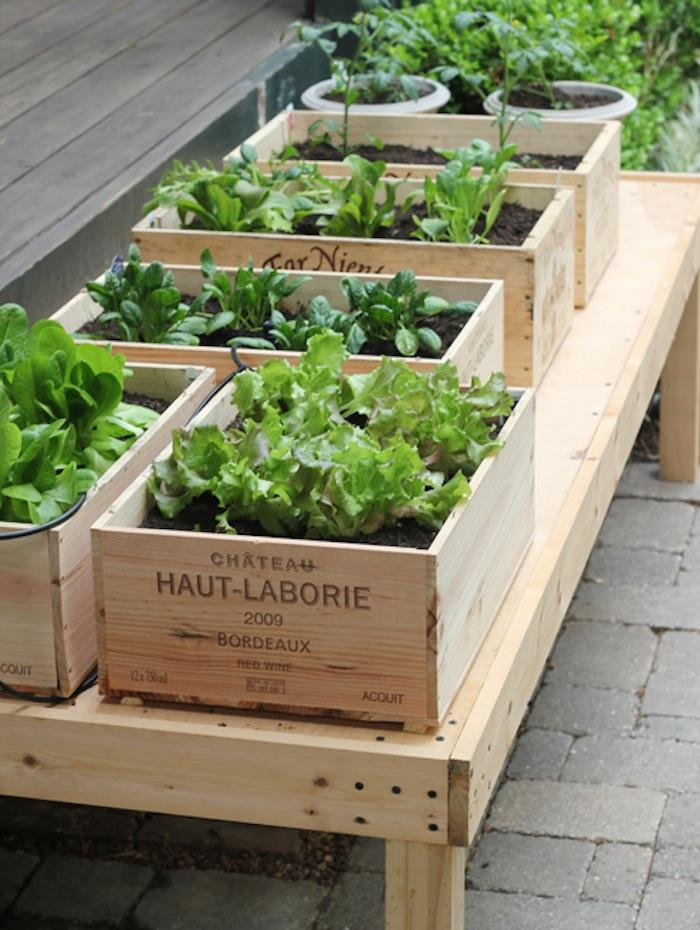 This promotes the development of adventitious roots along the portion of the stem buried under the soil. A larger, more robust root system improves the ability of the plant to take up water and nutrients.
This promotes the development of adventitious roots along the portion of the stem buried under the soil. A larger, more robust root system improves the ability of the plant to take up water and nutrients.
One final notes about growing tomatoes in raised beds: there are determinate and indeterminate types of tomatoes. Determinate varieties, also called bush tomatoes, typically grow three to four feet tall. Indeterminate varieties, or vining tomatoes can grow seven or more feet tall. I grow both types but it’s more challenging to care for indeterminate tomatoes in raised beds as they need strong stakes or supports. You also have to tie the new growth of indeterminate tomatoes to the stakes weekly. Determinate varieties are shorter and require less fussing. I support determinate tomatoes with heavy duty tomato cages. Trailing varieties of tomatoes like Terenzo and Tumbling Tom are perfect for planting at the edge of a raised bed.
You can grow determinate or indeterminate tomato varieties in raised beds. Securely cage or stake tall varieties to keep them upright.
Securely cage or stake tall varieties to keep them upright.Cucumbers
Cucumbers are another warm season vegetable sensitive to cold soil and air temperatures. The early soil warming of raised beds is beneficial to when planting tender cucumber seeds or seedlings. There are two main types of cucumbers: bush and vining. Bush cucumbers grow just a couple of feet long and grow well in containers or raised beds. I support the bush cucumber plant on tomato cages but they can also be allowed to tumble over the sides of a raised bed.
Vining cucumbers can also be grown in raised beds but I plant them at the base of a trellis like an A-frame trellis. This keeps the vigorous plants from taking over the entire raised bed. Trellised plants also have fewer issues with insects and diseases and the fruits are easier to spot.
An A-frame trellis like this can be used for vining crops like cucumbers, squash, pole beans, and melons.Carrots
Carrots, as well as other long-rooted vegetables like daikon radishes and parsnips are well suited to the deep, loose soil in raised beds.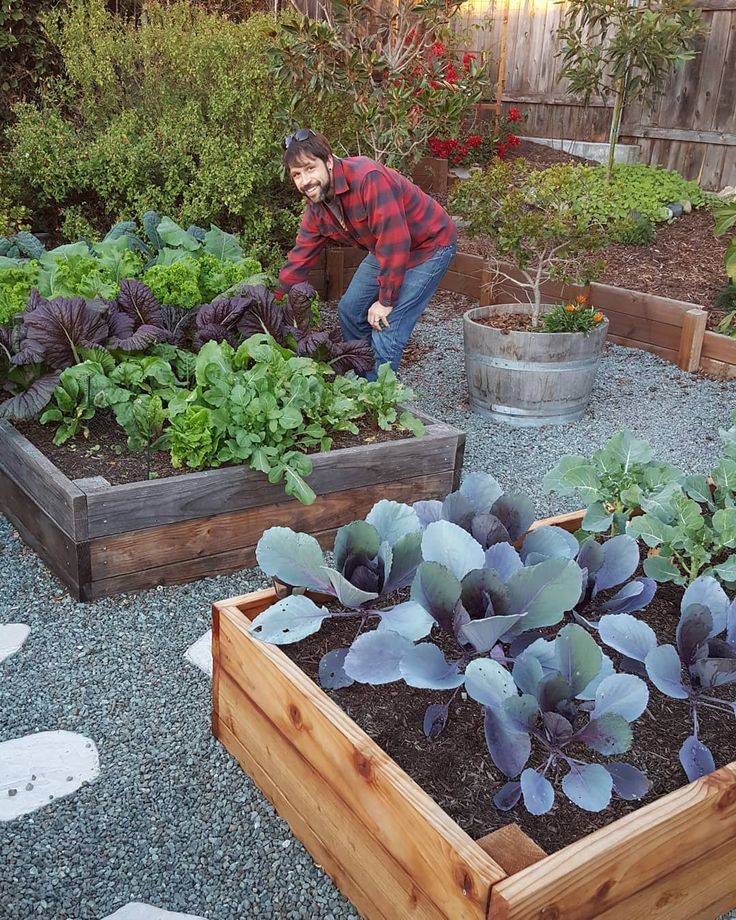 In beds shorter than 8 inches, stick to carrot types with compact roots like Chantenay, baby, and Parisian which has rounded roots. If your raised beds are deeper than 12 inches, you can grow long carrots like Imperator varieties. Carrots also prefer growing in stone-free soil. When grown in gardens with a lot of rocks or pebbles carrot roots can fork. Planting them in raised beds where you control the soil means carrots can grow long and straight.
In beds shorter than 8 inches, stick to carrot types with compact roots like Chantenay, baby, and Parisian which has rounded roots. If your raised beds are deeper than 12 inches, you can grow long carrots like Imperator varieties. Carrots also prefer growing in stone-free soil. When grown in gardens with a lot of rocks or pebbles carrot roots can fork. Planting them in raised beds where you control the soil means carrots can grow long and straight.
Melons
Melons like honeydew, watermelons, and muskmelons are a summer treat! For many years I tried to grow melons in my vegetable garden but only had tiny fruits by the time autumn frost killed the vines. Now my muskmelon harvest begins in mid-summer and continues for almost two months! I also harvest dozens of watermelons and cantaloupe in late summer. I haven’t moved south of the border but instead grow melons in my raised beds.
Raised beds and melons go well together for several reasons: 1) Warm spring soil encourages the small seedlings to push out plenty of early growth so they can size up as quickly and begin to flower. 2) The loose, non-compacted soil in raised beds promote healthy root growth. 3) Raised beds drain well which means spring showers don’t oversaturate the soil – melons don’t want to be sitting in wet soil. The downside to growing melons in raised beds is that the plants are typically vining and take up a lot of room. I plant them at the sides of my beds so they can trail over the side or grow them up an A-frame trellis.
Eggplant
Eggplant is a tomato and pepper relative which also flourishes in the summer heat. If planted when the soil is cold and wet, the seedlings sulk. When I grew eggplant in my former in-ground garden I had to wait a couple of weeks after the last frost for the soil to warm up or I had to pre-warm the soil by laying black plastic sheeting on top of the soil surface for 10-14 days prior to planting.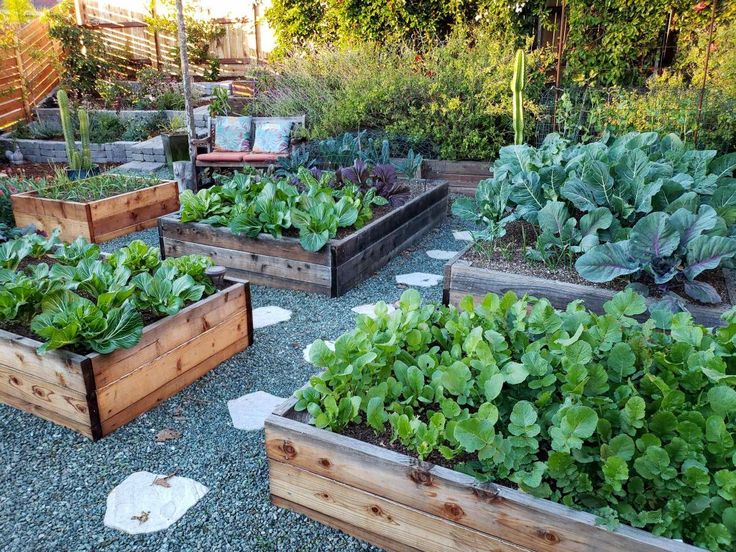 With raised beds, I no longer have to fuss with pre-warming my soil to make sure my eggplant transplants get off to a good start. The soil warms early and the water from frequent spring rains drains away quickly. I support raised bed eggplants with tomato cages.
With raised beds, I no longer have to fuss with pre-warming my soil to make sure my eggplant transplants get off to a good start. The soil warms early and the water from frequent spring rains drains away quickly. I support raised bed eggplants with tomato cages.
Sweet potatoes
Sweet potato plants need a long warm growing season to yield a crop of good-sized tubers. I’ve had excellent luck planting short season varieties in my raised beds. I plant the slips in late spring, about a week after the last frost date. Soon the vigorous plants fill their section of the garden bed. They don’t grow well in dense or rocky soils, but thrive in the warm, well-draining soils of my raised beds. Before the first fall frost we cut back the plants and dig the tubers – what a treat! We also graze on the leaves during the summer, not taking too many as we don’t want to impact tuber development.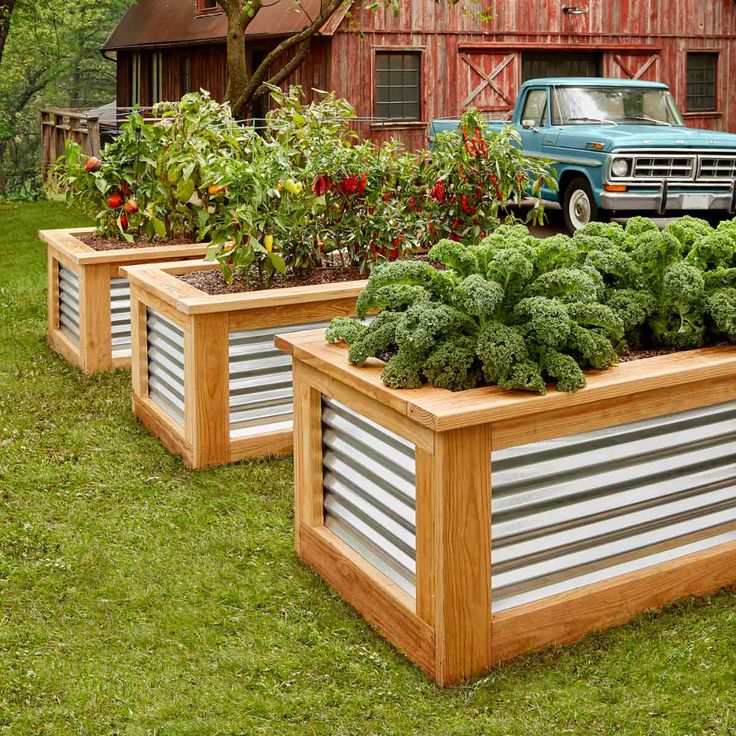 The tender leaves are excellent stir-fried or steamed.
The tender leaves are excellent stir-fried or steamed.
Leafy greens
I sow seeds for my favourite salad greens like leaf lettuce and spinach in my raised beds as soon as the ground has thawed in early spring. These fast-growing greens love rich soil and raised beds make it easy to add compost or aged manure directly to the portion of the bed where they will be planted. It’s also easy to sow a pinch of seeds or tuck seedlings along the edges of beds so they don’t take up much space. Quick growing greens like arugula and leaf lettuce are also perfect for interplanting between slower growing crops (like tomatoes and peppers) at the beginning of the season.
The early warming soil of raised beds allows early planting of lettuce. After harvesting, replace the lettuce with a summer crop of bush beans or zucchini.Onions
Onions do not like growing in compacted soil. Raised beds provide the loose, well-draining growing medium they prefer making onions one of the best vegetables to grow in raised beds.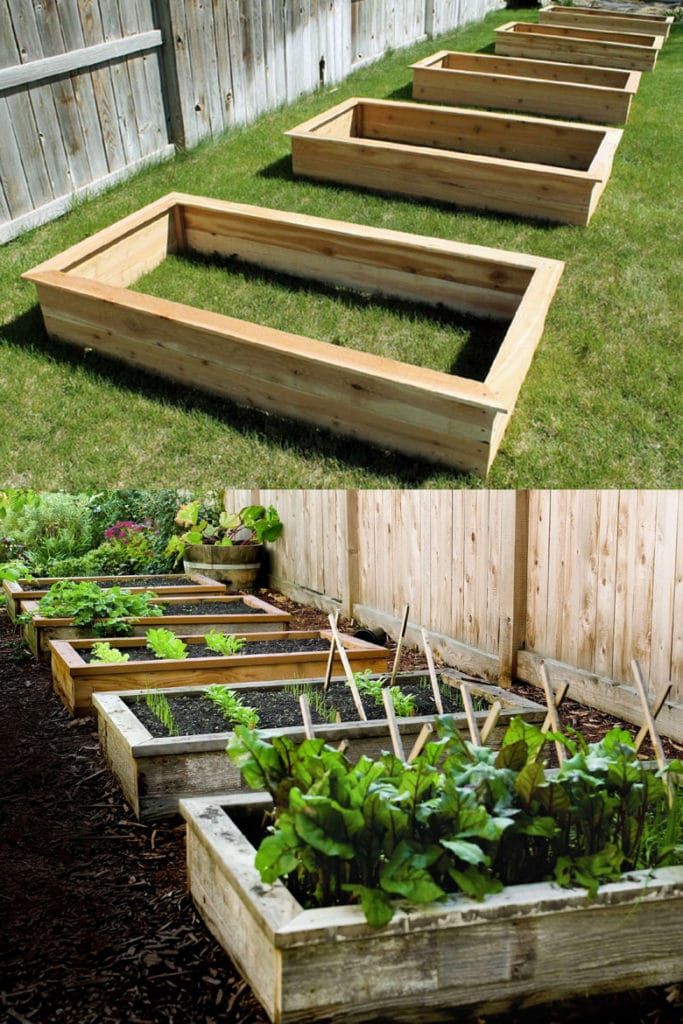 Before planting onions in early spring I enrich the soil with an inch or two of compost. I then plant the onion sets or seedlings 6 inches apart. Raised beds provide soil that drains freely after a rain or watering which encourages healthy onion plants and large bulbs.
Before planting onions in early spring I enrich the soil with an inch or two of compost. I then plant the onion sets or seedlings 6 inches apart. Raised beds provide soil that drains freely after a rain or watering which encourages healthy onion plants and large bulbs.
Other vegetables to consider growing in raised beds include ground cherries, tomatillos, potatoes, and squash.
For further reading on raised beds, be sure to visit these articles:
- Galvanized raised beds: DIY and no-build options for home gardens
- 4 by 8 foot raised bed vegetable garden layout options
- The best soil for a raised bed
- The best materials for raised garden beds
- Raised bed designs
Did this list of the best vegetables to grow in raised beds help you decide what to plant in your garden?
Raised bed: how to arrange it and what to plant
A modern gardener keeps up with the times, so he is interested in new technologies.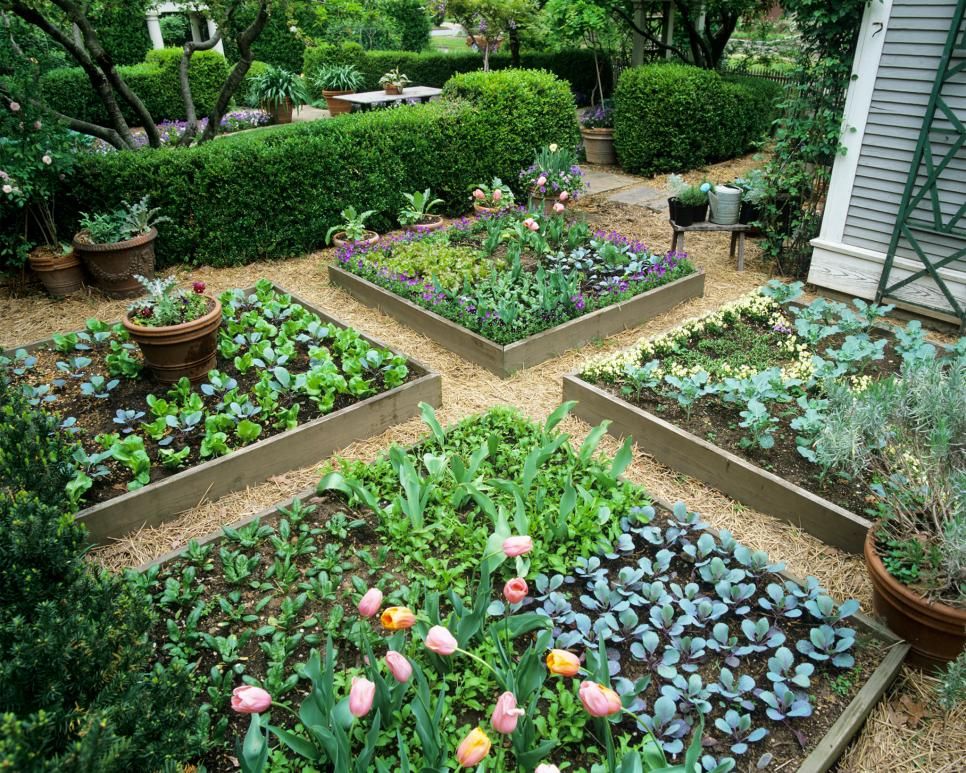 However, old ideas can work just fine. A warm high bed is one of those. How to arrange it on the site?
However, old ideas can work just fine. A warm high bed is one of those. How to arrange it on the site?
Raised bed: advantages and disadvantages
A warm raised bed has many advantages over a conventional one. Harvest on it ripens at an earlier date. Such a bed is easy to adapt to the disposal of organic residues. In addition, plants that "sit" high are very convenient to care for, as watering and weeding are simplified. Local application of organics allows you to save on the purchase of humus.
The raised bed also has disadvantages. So, its contents must be removed every 4-5 years and refilled. It may seem complicated and assembly design. After all, for it you need to select the appropriate materials. It will also require certain skills in owning a hammer and saw. In addition, over time, the sides also exhaust their resources, and therefore require replacement.
What is grown on it?
Many vegetable crops can be grown in warm beds, especially if they are initially made tall.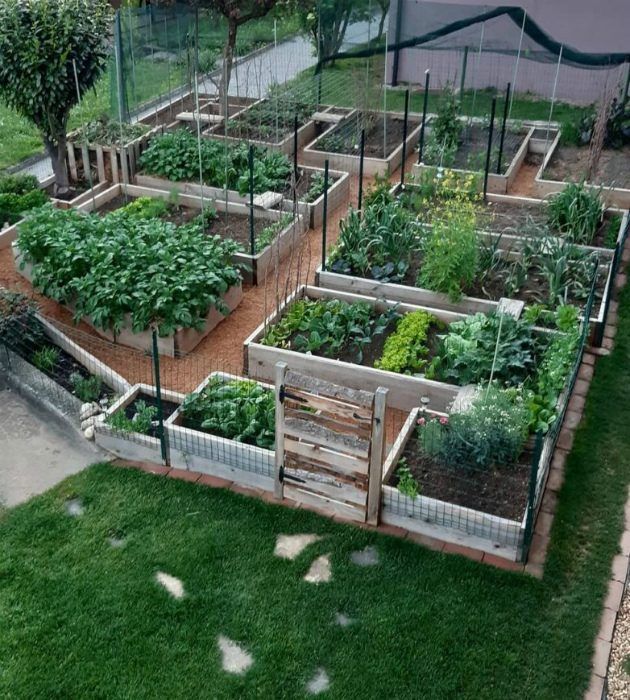 A warm raised bed is ideal for growing early greens and radishes. You can adapt it for the cultivation of cucumber or nightshade (tomato, pepper, eggplant). Then you should provide for the shelter of these sissies from the cool night air, using arcs and lutrasil or spunbond.
A warm raised bed is ideal for growing early greens and radishes. You can adapt it for the cultivation of cucumber or nightshade (tomato, pepper, eggplant). Then you should provide for the shelter of these sissies from the cool night air, using arcs and lutrasil or spunbond.
The right decision is the device on the site of several high beds. This will allow you to rotate the crops grown in them. In the first season after laying organics in the garden, it is better to grow pumpkin crops (cucumber and pumpkin), in the second year - cabbage, in the third - beans and root crops, in the fourth - green crops, including onions for feathers or turnips, peas, onions, carrots or beets. At the end of the four-year cycle, the contents of the beds must be replaced.
How to put it into practice?
The high bed frame can be made by yourself using available materials. Durable wood-polymer composite panels look beautiful, do not need maintenance, do not fade in the sun, and are resistant to temperature changes.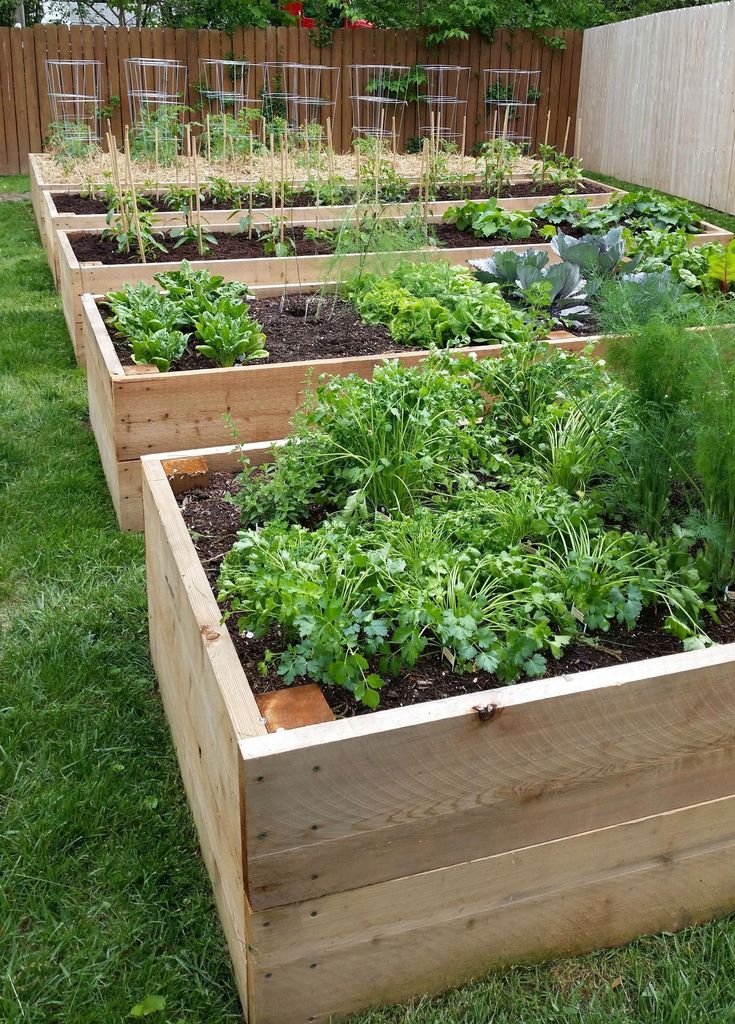 All these advantages are correlated with the high cost of this material.
All these advantages are correlated with the high cost of this material.
Cellular polycarbonate is also suitable for high beds: it is not afraid of contact with the soil. However, it should be remembered that all open sections must be isolated from moisture entering the honeycombs, otherwise frozen water will break them. Polycarbonate can be used to build a high bed roof, if one is planned. But this design is more like a greenhouse, and not a high bed.
Usually summer residents build high beds-boxes from a board impregnated with special agents against mold.
Not the most environmentally friendly material - slate - also found application in the construction of high beds. However, only a raised bed 40–50 cm high can be made from it, a high (80–100 cm) bed, trimmed with old slate, looks too unaesthetically. This material is also quite fragile and overheats in the sun.
Earthwork: layers
The arrangement of the bed must be started with a trench, for this the sod is removed and a depression is dug in the soil of the required size.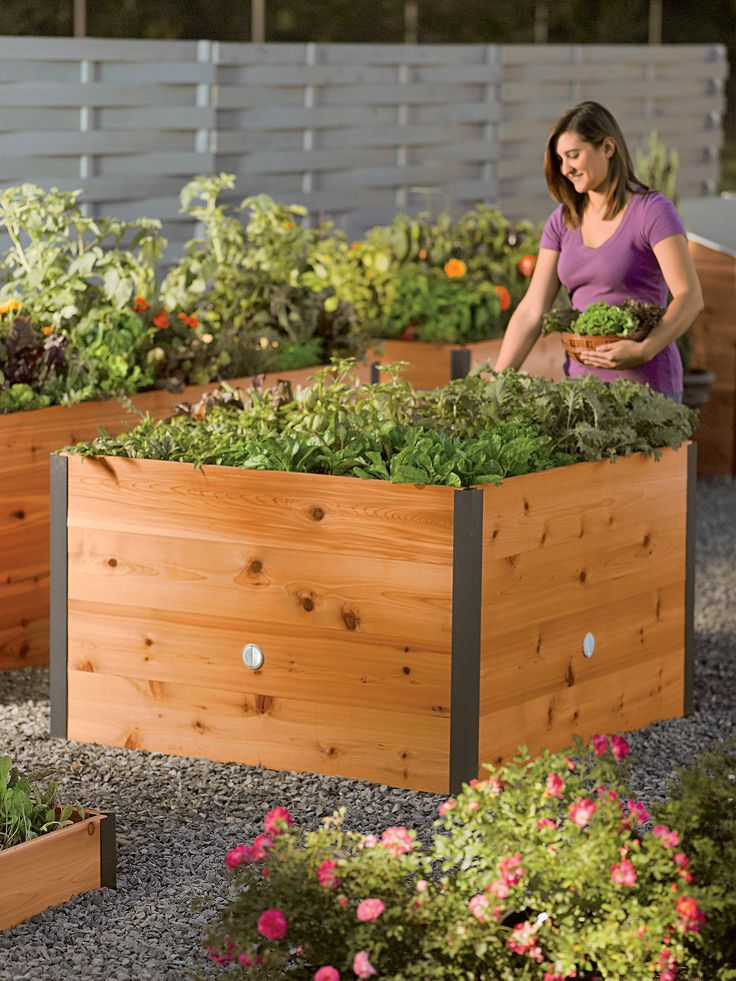 Next, install the bed box. Logs, thick branches are laid at the bottom, sawdust is poured, sprinkled with soil, fresh manure. This is followed by a layer of plant residues or household organic waste and a layer of garden soil. The puff "pie" of organics should lie in the box, filling it completely. You can cover the bed with dark lutrasil so that in the spring its rotted contents thaw and warm up faster.
Next, install the bed box. Logs, thick branches are laid at the bottom, sawdust is poured, sprinkled with soil, fresh manure. This is followed by a layer of plant residues or household organic waste and a layer of garden soil. The puff "pie" of organics should lie in the box, filling it completely. You can cover the bed with dark lutrasil so that in the spring its rotted contents thaw and warm up faster.
Raised beds - what, why and how
Bulk high beds with slate, brick, wood or metal borders solve many problems. They are easy to care for and easier to harvest. In properly laid high beds, plants grow faster and feel better.
Growing vegetables in high beds requires skill, attention and understanding of what is happening. Plants raised above the ground need more care, but give much more tangible yields. In areas with a critical level of groundwater, there is no alternative to high beds at all. But the list of advantages of the popular way of organizing a garden and even flower beds is much wider, and anyone can make high beds.
In what cases does it make sense to make high beds
Working on the ground requires physical strength. It is contraindicated in diseases of the spine. High beds allow older people with back and neck pain to engage in gardening. Plants raised above the soil level do not need to bend over much. Do-it-yourself high beds can be weeded and loosened while sitting on a small chair.
Owners of plots in lowlands, with close groundwater, often fail to grow vegetables due to damp and cold soil. The construction of high beds will eliminate these problems. Raised structures warm up quickly, do not suffer from waterlogging and eliminate the significant cost of draining the area allotted for the garden.
What you need to know about high beds:
- are suitable for gardens that are cultivated by hand without a cultivator;
- warms up quickly in spring, ideal for early harvests;
- provide independence from the initial quality of the soil - soil of any composition can be loaded into the box;
- allow you to plant a garden literally on virgin soil, which is important for newly acquired plots;
- require regular watering, ideally a drip system;
- get rid of the annual digging of the garden.
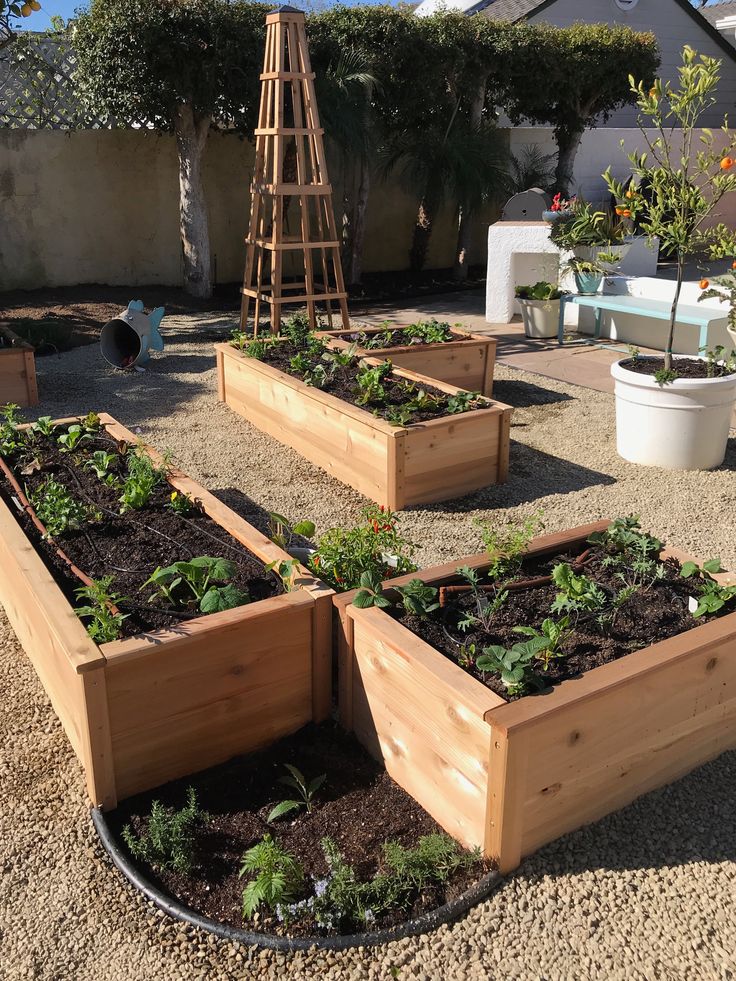
Cucumbers, squash and pumpkins are considered to be the best crops to start in freshly established high beds where soil biota has not yet developed.
Materials needed
The beds can be of different widths and heights. The classic high bed has a side height of 30-70 cm and a width of 90-120 cm.
The box can be made from any environmentally friendly building material. The most time-consuming option is brick or concrete. But in this case, you will get almost eternal designs. Boards are cheaper, but a box of them will last 3-4 seasons. You can extend the operation if you treat the wood with a blowtorch.
Golden mean - slate boxes. This material does not rot, is not afraid of the sun, wind, frost. Its only drawback is fragility, so slate beds need transverse jumpers - stiffeners, thanks to which the box will remain rigid for many years.
How to make high beds
First you need to prepare the ground: remove weeds, level the surface.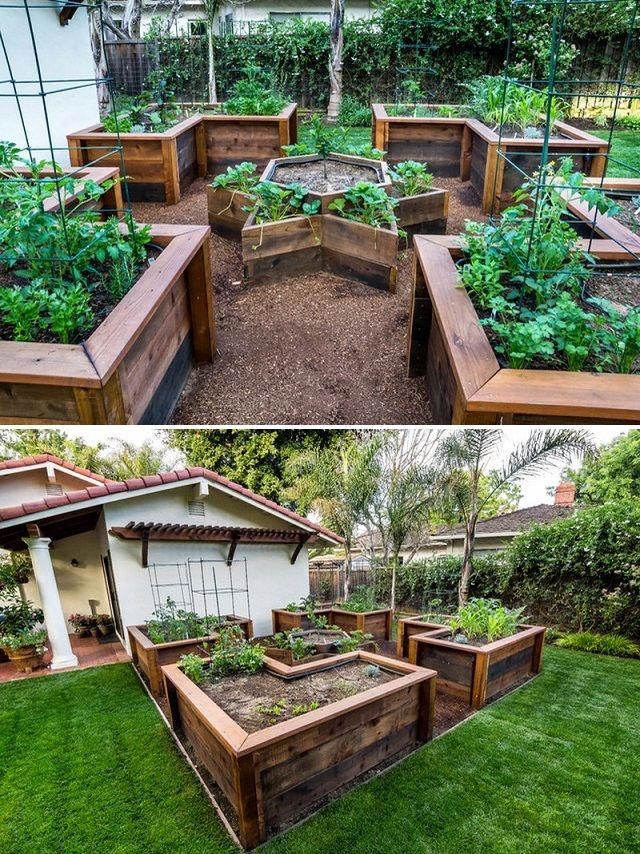 The beds should go from north to south - then the plants will be well lit. To prevent moles and bears from crawling inside, any construction galvanized mesh is spread on the surface of the soil. Sheet iron or geotextiles for flooring cannot be used - an exchange of water and air is necessary between the bed soil and the base layer, earthworms and other useful soil fauna must freely crawl into the box.
The beds should go from north to south - then the plants will be well lit. To prevent moles and bears from crawling inside, any construction galvanized mesh is spread on the surface of the soil. Sheet iron or geotextiles for flooring cannot be used - an exchange of water and air is necessary between the bed soil and the base layer, earthworms and other useful soil fauna must freely crawl into the box.
The installed box is additionally fixed with wooden or metal fittings dug into the ground. The bed is filled with garden soil mixed with sand, mineral and organic fertilizers. If desired, any plant residues can be laid in the first layer in a high bed, up to trimmings of old tree trunks, branches, twigs, thick and hard tops that are not suitable for compost. Thanks to such a “pillow”, next season the high beds will be filled with nitrogen to the eyeballs.
What to plant in high beds
In cold climates, raised beds are only suitable for annual crops. Perennials freeze in them. Therefore, in the northern regions, strawberries and perennial flowers are not planted on high beds. In spring, summer and autumn, any vegetables and herbs grow well on them.
Perennials freeze in them. Therefore, in the northern regions, strawberries and perennial flowers are not planted on high beds. In spring, summer and autumn, any vegetables and herbs grow well on them.
In regions with a temperate and warm climate, it is convenient to grow anything on high beds, but especially strawberries, or garden strawberries.
As with conventional cultivation, crop rotation must be observed, returning the crop to its original place no earlier than after 3-4 years.
How to water high beds
When watering, it is important that the soil is wet across the entire height and width of the bed. It is difficult to achieve this - the water strives to escape through the joints in the sides onto the path.
Raised beds seem to be specially designed for drip irrigation systems. If you stretch a special tape with nozzles over the surface of the soil and connect it to a water supply or water tank, then all problems with watering will disappear.